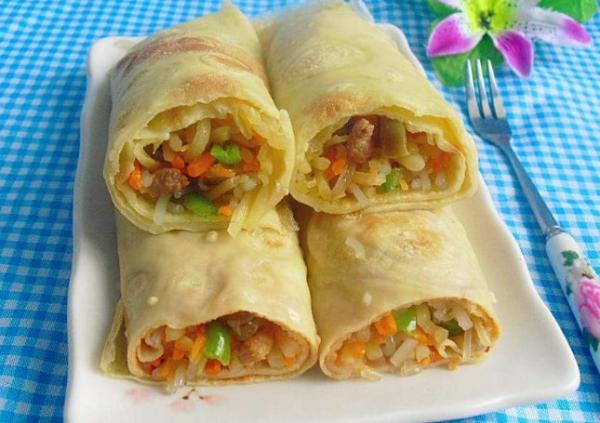Chinese Mid-Autumn Festival 2025 Traditions & Activities
The Chinese Mid-Autumn Festival, or the romantic Moon Festival, is the festival of autumn in China and the second most important traditional festival in China, after the Chinese New Year. It’s an important time for families to be reunited, similar to Thanksgiving Day in the West.
What do Chinese people do on Moon Festival day? How do they celebrate the festival? Well, Mid-Autumn Festival celebrations may vary in different parts of China, but eating mooncakes is a must. Read on to see more fun traditions and activities of Chinese Mid-Autumn Festival 2025 celebrations.
1. Eating Mooncakes
Moon cakes, also called harvest cakes, palace cakes, reunion cakes, etc., were the sacrificial offerings for worshipping the moon god during the Mid-Autumn Festival in ancient times. Later, Chinese people gradually took the Mid-Autumn Festival as an important date for a family reunion and began to taste moon cakes as a form of celebration.
Round moon cakes symbolize reunion, and people regard them as festive food, gifts to relatives/friends, and offering for the moon. Up to now, eating moon cakes has become a must-have custom for Mid-Autumn Festival all over the country. Thus it is also known as the Chinese Mooncake Festival.
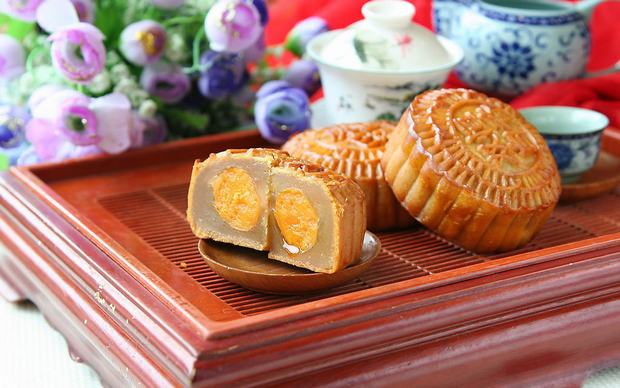
2. Moon Worship
Moon worship is an ancient custom in China, essentially an act of reverence toward the “Moon Goddess” practiced by ancestors. In ancient times, there was a tradition of “autumn evening moon worship.” Moon worship refers to paying homage to the Moon Goddess. Since ancient times, in parts of Guangdong, people have maintained the custom of worshipping the Moon Goddess (paying respects to the Moon Goddess or the moonlight) on the night of the Mid-Autumn Festival. As one of the important traditions of the Mid-Autumn Festival, moon worship has been passed down from ancient times to the present.
In ancient times, people would set up an incense altar in their courtyards on the Mid-Autumn night, placing a tablet for the “Moon God” and offering seasonal fruits and pastries as sacrifices, such as watermelon, apples, pomegranates, grapes, water chestnuts, and mooncakes, which were indispensable. Today, family and friends gather around tables, enjoying the moon and chatting while savoring the delicacies.
3. Making Festive Lanterns
On the night of the Mid-Autumn Festival, there is a custom of lighting lanterns to echo the moonlight. Nowadays, there is still a custom of stacking tiles into a tower and burning lights on it in the Hubei and Hunan regions. In the areas of Zhengjiang, south of Jiangsu and Shanghai, local people make river lanterns for the festival.
In the early 20th century, making lanterns got more popular in many places, especially in Guangdong. According to the article at that time, every family used bamboo sticks to make paper lanterns ten days before the festival, on which “Celebrate the Mid-Autumn Festival” was written. The lanterns were of different colors with various themes and shapes like fruits, birds, animals, fish, or insects.
The lanterns with a burning candle inside were tied to bamboo poles with ropes, erected on tile eaves or terraces. The lanterns hanging in the wealthy family can be more than 10 meters high. The family gathers under the light to drink and enjoy, while ordinary people erect a flagpole with two smaller lanterns and also have their pleasure. The lanterns of the Mid-Autumn Festival are second only to those of the Lantern Festival in scale.
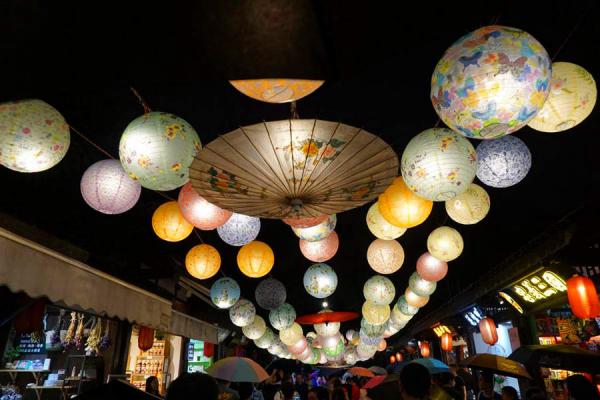
4. Appreciating Osmanthus & Drinking Osmanthus Wine/Tea
In Chinese legend, there is a huge osmanthus tree on the moon. Usually, osmanthus blooms around the period of the Chinese moon Festival. Traditionally Chinese people eat various foods made of sweet-scented osmanthus flowers, mostly are cakes and candies.
On the night of the Mid-Autumn Festival, with the traditions of looking up at osmanthus in the moon, smelling bursts of flower fragrance, drinking a cup of sweet-scented osmanthus wine or tea, enjoying the sweetness of the family, people can have a lovely moment of the festival.
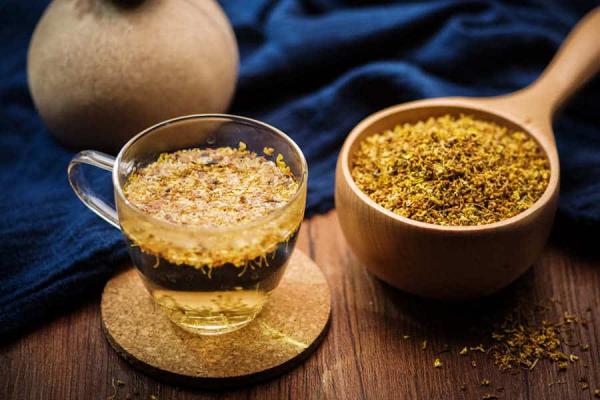
5. Watching the Tides of Qiantang River
Up to now, watching the tides of the Qiantang River in Zhejiang has been another Mid-Autumn Festival event since West Han Dynasty (202-8 BC). Therefore, it has a long history. The trumpet-shaped river mouth connects with the East China Sea, causing enormous tides. It is believed that the tides in the 8th lunar month are the most magnificent. Yanguan Town (盐官镇) is regarded as the best spot to watch the tidal bore.
>> Related reading: Chinese New Year Traditions & Activities
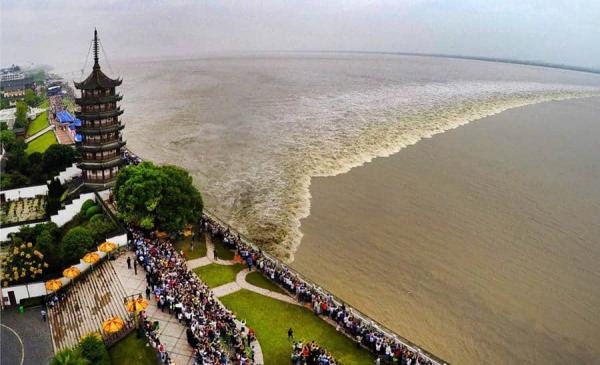
Various Celebrations of the Mid-Autumn Festival in Different Places of China
Wuxi of Jiangsu Province
People in Wuxi have a complete set of customs for the Mid-Autumn Festival: when they wake up in the morning, they eat candied taro with sweet-scented osmanthus as a featured festive snack. Some people will prepare a "Happiness Banquet" at noon in memory of their ancestors during the reunion festival.
It is a sacrificial ceremony of the family. There will only be one big plate on the table, which contains five vegetarian dishes, four types of fruit, and a few cups of rice wine. It is not required to serve rice and burn the gold and silver-colored foil. The focus of the Mid-Autumn Festival is that at night, the whole family should reunite as much as possible to eat the "Mid August Dinner".
In addition, there is another Mid-Autumn Festival tradition Wuxi people keep today, that is, after the Mid-Autumn Festival dinner, every household must "burn the heavenly incense" in the courtyard or courtyard to worship the moon. After the dusk fell, every household moved the table out of the house and placed moon cakes, chestnuts, ginkgo seeds, and other snacks. An incense burner is in the center of the table with a big square bowl mouth and small and round bottom. A bunch of incense sticks can burn for quite a while.
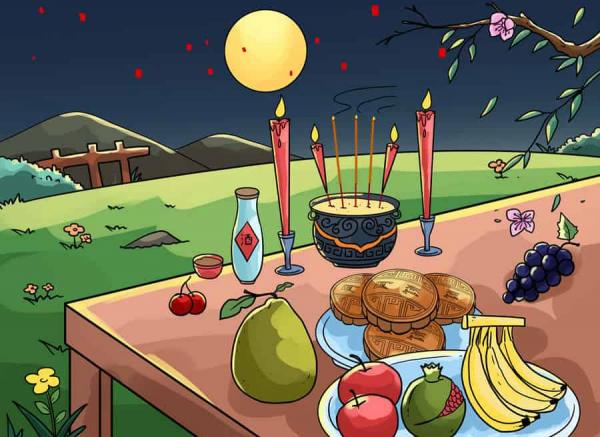
According to old generations, the purpose of "burning incense" is to pray to Chang'e, who will bring peace and tranquility to the world, and prevent separations of family members. Traditionally it is the responsibility of the women and children to worship the moon. When the lit incense is finished, the adults will share the mooncakes and snacks with the children. Some naughty children will run around the village to ask their neighbors for some snacks they don’t have at home.
Sichuan
Besides eating moon cakes, people in Sichuan also eat sticky rice cakes, ducks, sesame pancakes, honey pancakes and so on. In some places, tangerine lanterns are also lit and hung at the door for celebrations. Some children insert incense sticks on pomelo and sway it around them along the street, adding more fun to the festival. During the Mid-Autumn Festival in Jiading County, they worship the god of earth, play local dramas and folk music.
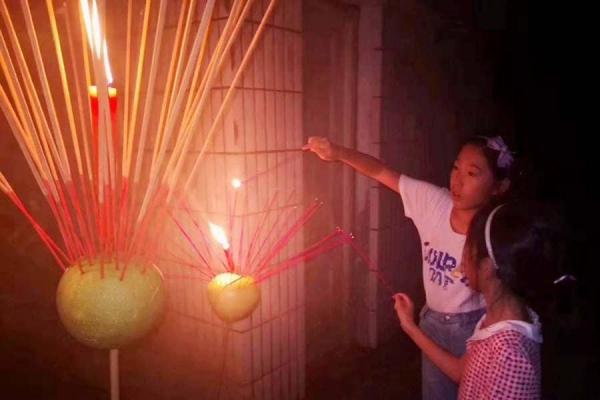
Jiangxi
On the evening of the Chinese Moon Festival, in Ji’an County of Jiangxi Province, every village heated crock pots by burning straws underneath. After the pot turns very hot, put some vinegar into it. Then there will be a special fragrance that pervades every corner of the village.
North China: Shandong and Shanxi
In North China, farmers in Qingyun County, Shandong Province pay homage to the god of earth and grains during the Mid-Autumn Festival. In addition to offering sacrifices to the moon, people in Zhucheng, Linyi, and Jimo also go to their ancestors’ cemetery to worship and pray. People in Jimo eat a special festive food called "Maijian" – a kind of stuffed pancake.
In Lu'an of Shanxi Province, a dinner will be hosted for the son-in-law on the day. While in Datong, moon cakes are also called reunion cakes, people there usually stay up all night for the celebration of the Mid-Autumn Festival.
